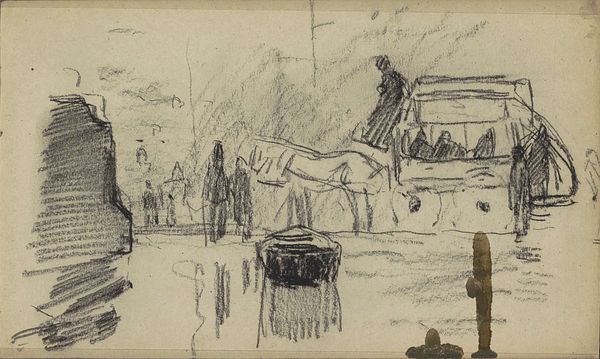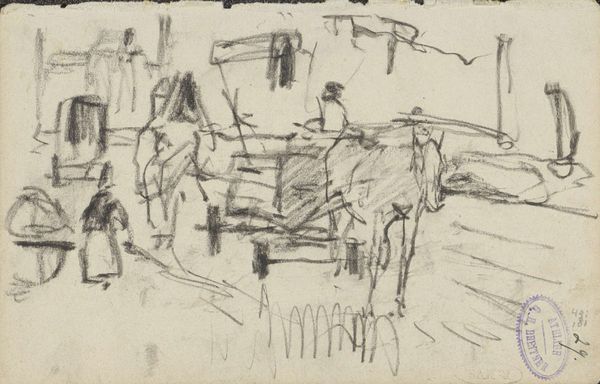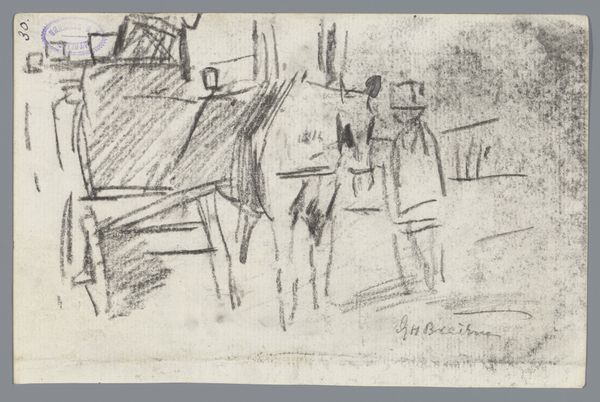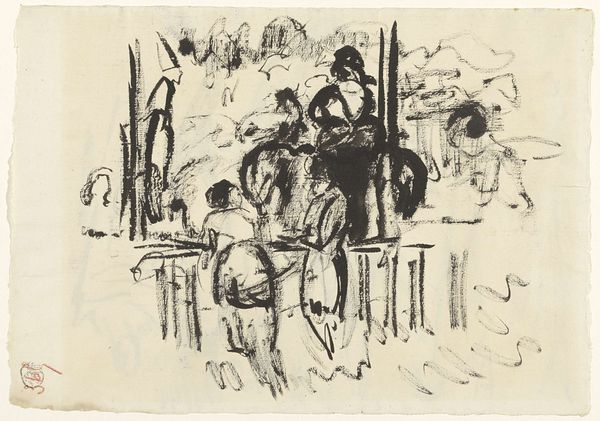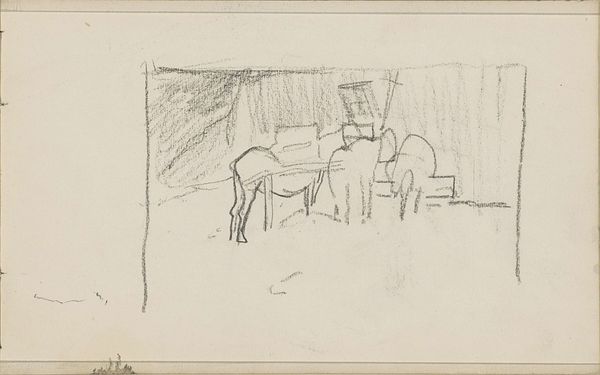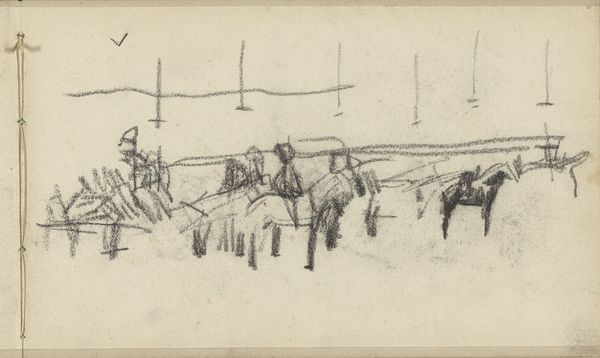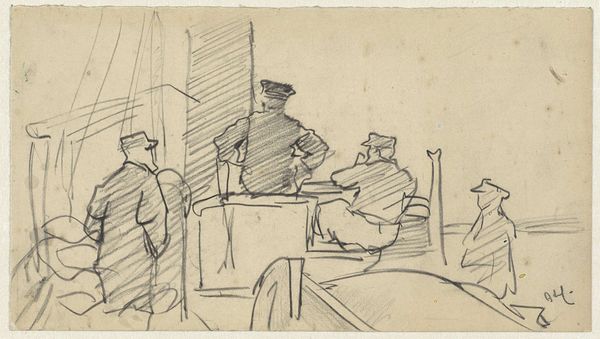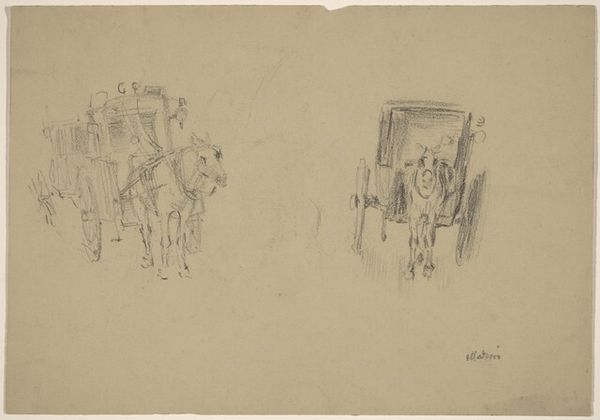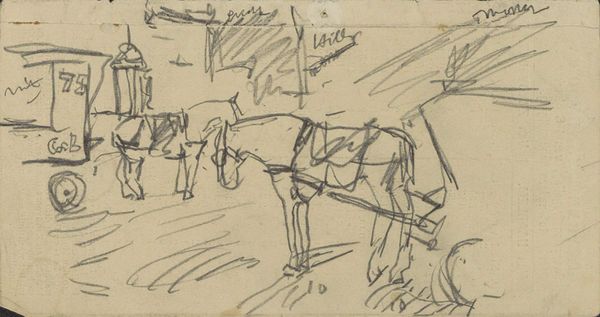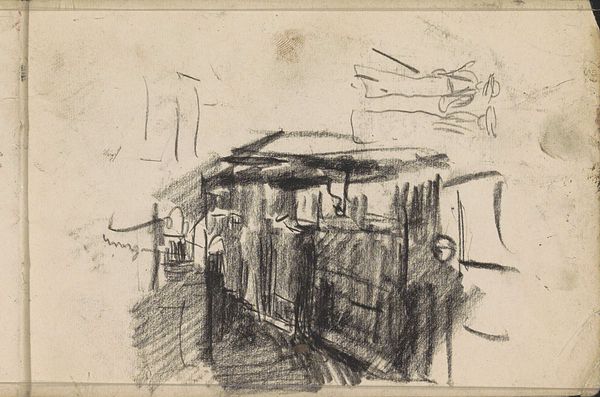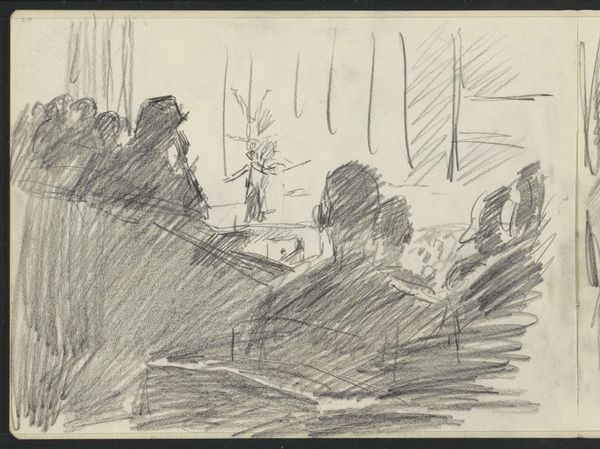
Dimensions: height 79 mm, width 127 mm
Copyright: Rijks Museum: Open Domain
Editor: Here we have "Wachtende paarden," or "Waiting Horses," a pencil drawing by George Hendrik Breitner, created sometime between 1867 and 1923. The sketchiness creates a feeling of impermanence; the scene is bustling but subdued. What catches your eye in this piece? Curator: What I find striking is how Breitner uses the horse, a historical symbol of power and nobility, in this fleeting, almost mundane context. Look at their bowed heads, their stillness. Does this not challenge the conventional representation of the animal? Editor: Absolutely. Usually, we see horses in dynamic poses, full of energy. Here, there’s a weariness. Is Breitner commenting on the changing role of horses in urban life during this period? Curator: Precisely! The rise of industrialization began shifting reliance from animals to machines. Breitner's impressionistic style captures this moment of transition, using symbolism that transcends the single moment. He presents horses no longer as symbols of status or power, but rather entities caught within an evolving societal narrative, performing labor. What lasting message do these "waiting horses" leave us? Editor: It suggests themes of obsolescence, but also patience and endurance. Despite the changing world, these creatures persist, perhaps reflecting something about the human condition as well. Curator: Precisely. By juxtaposing the symbolic weight of the animal against the mundanity of their waiting, Breitner invites us to reflect on our own relationship to progress and tradition. Editor: I see the layers so much clearer now. Thank you for untangling the web of historical and emotional symbols! Curator: My pleasure. It is the convergence of history, culture, and art, which creates layers of stories, inviting an ongoing exploration of collective memory.
Comments
No comments
Be the first to comment and join the conversation on the ultimate creative platform.

